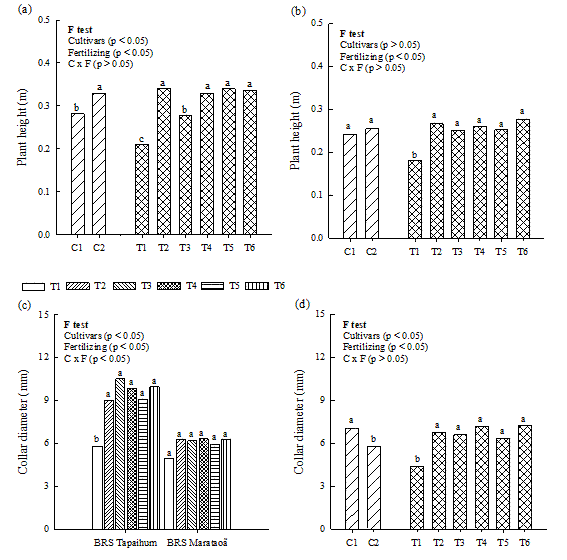ABSTRACT
In the northeastern of Pará, cowpea is one of the main protein sources of the population. This study aimed to evaluate the effects of liming, the P and K mineral fertilization, and the combination of seed inoculation with Rhizobium associated with mineral N supplementation in the growth and production of cowpea cultivars. Two experiments were carried out in two consecutive years at the Federal Rural University of Amazonia (Capitão Poço-PA). A randomized block experimental design with subdivided plots was used with four replications, two cowpea cultivars (BRS Tapaihum and BRS Marataoã) and six fertilization and liming treatments: i) without fertilization and without liming; ii) P and K mineral fertilization, liming and seed inoculation with Rhizobium; iii) P and K mineral fertilization and seed inoculation with Rhizobium; iv) N, P and K mineral fertilization and liming; v) P and K mineral fertilization and liming; and vi) N, P and K mineral fertilization, liming and seed inoculation with Rhizobium. Cowpea responded to liming and P and K mineral fertilization, but not N fertilization. There was no difference between the supply of N through seed inoculation or mineral fertilization. Thus, it is suggested to inoculate seeds with Rhizobium in order to maintain the soil N reserve.
Keywords:
acidity correction; biological nitrogen fixation; Rhizobium; leguminous crops; amazon soils

 Thumbnail
Thumbnail
 Thumbnail
Thumbnail
 Thumbnail
Thumbnail
 Thumbnail
Thumbnail
 Thumbnail
Thumbnail




